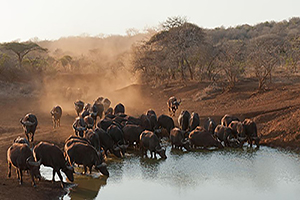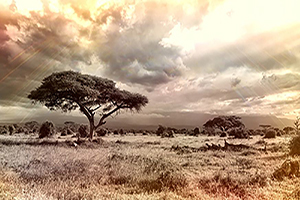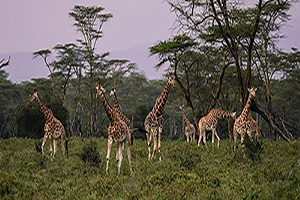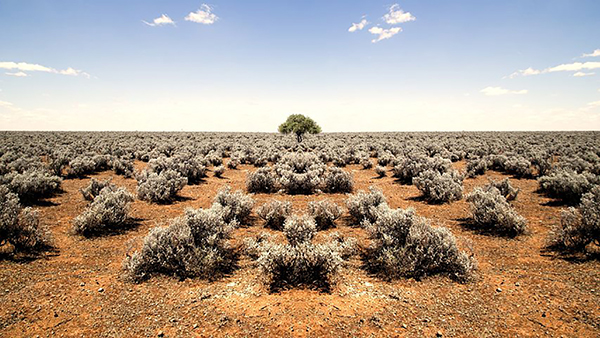A savanna is a rolling grassland scattered with shrubs and isolated trees, which can be found between a tropical rainforest and desert biome.
Not enough rain falls on a savanna to support forests. Savannas are also known as tropical grasslands. They are found in a wide band on either side of the equator on the edges of tropical rainforests.
Savannas have warm temperature year round. There are actually two very different seasons in a savanna; a very long dry season (winter), and a very wet season (summer). In the dry season only an average of about 4 inches of rain falls. Between December and February no rain will fall at all. Oddly enough, it is actually a little cooler during this dry season. But don't expect sweater weather; it is still around 70° F.
In the summer there is lots of rain. In Africa the monsoon rains begin in May. An average of 15 to 25 inches of rain falls during this time. It gets hot and very humid during the rainy season. Every day the hot, humid air rises off the ground and collides with cooler air above and turns into rain. In the afternoons on the summer savanna the rains pour down for hours. African savannas have large herds of grazing and browsing hoofed animals. Each animal has a specialized eating habit that reduces competition for food.
- Temperature: 68 degrees – 86 degrees
- Vegetation: Grasses and scattered trees
- Location: Between desert and rainforest, mostly near equator
Examples of Savannah Sights




